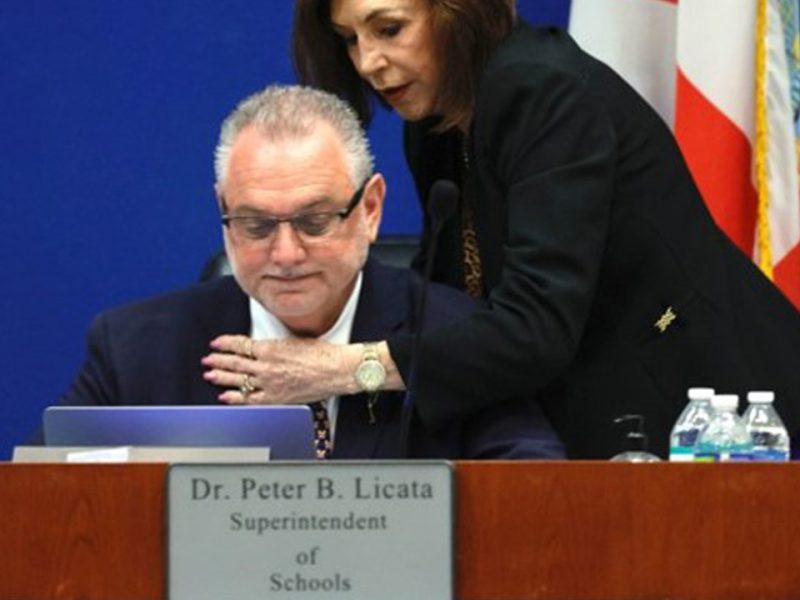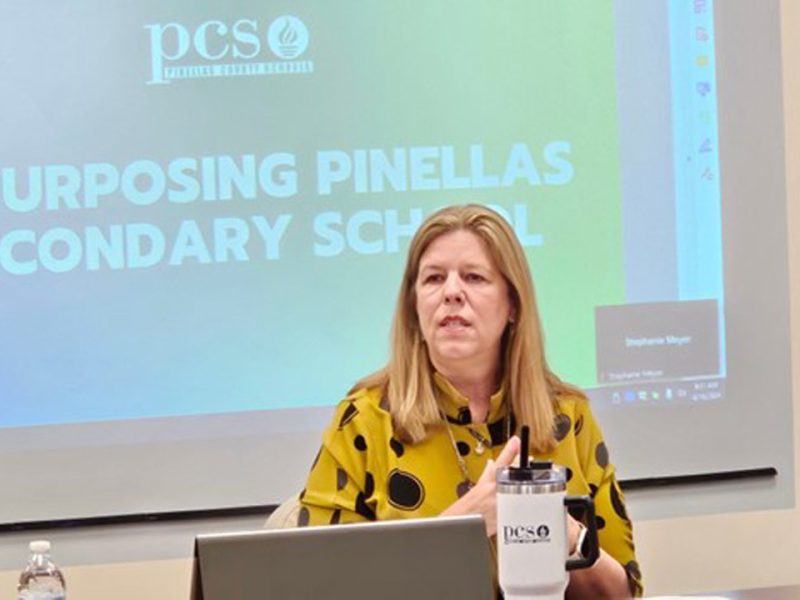Duval School Board approves tentative $2.6 billion budget and decreased millage rate
Florida Times-Union | By Emily Bloch | July 28, 2022
The Duval County Public Schools district is planning for a $500 million or roughly 26 percent increase in funds this academic year compared to last year, the 2022-23 tentative budget shows. That additional funding will account for rising fuel costs for school buses, inflation rates impacting big contracts, student scholarships and curriculum enrichment among other things.
This week, the board voted unanimously to approve its tentative budget for the school year.
The total proposed budget this year is $2.6 billion, up from $2.1 billion in 2021-22 and reflects an increase in funds allocated by the Florida Department of Education, which was signed by Gov. Ron DeSantis in June.
The state budget this year raised Duval County’s per-student funding to $8,020 up about 5 percent from last year.
School board member Elizabeth Andersen cautioned members of the general public at a recent meeting to remember that a budget increase doesn’t necessarily mean that the school district has more money for things like raises or school programs.
“When folks see an increase in the budget … it’s important to remember that money passes through the district but we don’t have the opportunity to necessarily invest that in our public school system,” Andersen said. “It will go through voucher programs and our charter schools.”
School district officials say that most of the increases to this year’s budget account for pass-through funding from the state, which goes to things like charter schools and voucher programs. The district received a $74 million increase in operational funding, which District Spokesman Tracy Pierce said is because of the increased cost of state-level scholarship programs as well as inflation rates impacting large-scale contracts.
For example, the Family Empowerment Scholarship for Students with Unique Abilities alone saw a $5 million increase in funding this year according to district officials. The scholarship provides students the ability to attend a private school and offers families of students with disabilities access to additional education choices.
Pierce said that, in turn, more families are requesting Family Empowerment scholarships.
“In 2020-21, we funded 3,928 students in private school scholarship programs,” Pierce said. “Last year, we funded almost 8,000 students in these scholarship programs. The projection is for these expenditures to continue growing next year.”
The exact number of Jacksonville families applying for Family Empowerment scholarships this school year isn’t available yet.
Federal grants, inflation and salaries account for large budget increases
Like last year, most of the money in this year’s proposed budget will go toward instructional salaries. The amount allotted for instructors within the budget is up 35 percent to $1,113,842,295 compared to last school year. Typically, increases from the state are meant to cover maintaining salaries and distributing raises to traditional and charter school teachers based on seniority. School districts usually submit plans to the state that indicate how Teacher Salary Increase Allocation funds will be spent around October.
Separately, Duval Schools officials are encouraging the public to vote in favor of a property tax increase that Superintendent Diana Greene says will help fund supplemental teacher bonuses as well as boosts to school arts and athletics programs.
Pupil personnel services — which include funding for things like coordinators and counselors for school readiness, special education, social work services and more —have a 39 percent increase allotted in Duval Schools.
In recent years, Gov. DeSantis has emphasized a goal to fund mental health resources in schools. This year, the state budget shows $140 million allocated for school mental health initiatives. Of that, public documents show that Duval Schools received $6 million from the state for Mental Health Assistance Allocation. It’s unclear to date how the school district expects to spend any additional funds.
The school district’s tentative budget has also listed a 3.4 percent increase for student transportation services. State funding for student transportation is based on a formula that accounts for students with special transportation needs, base funding for the school district established by the number of students eligible for transportation against the statewide number and efficient bus utilization versus rural population density. Duval Schools received $20 million from the state’s budget for student transportation allocation for the 2022-23 school year.
“The district is also incurring increased costs for large-scale contracts for transportation and school custodial services,” Pierce said. “Fuel costs are also expected to increase next year.”
Notably, the school received less state funding, about $983,000 less, toward turnaround programs because as of this school year, all of Duval County’s turnaround schools — schools that have maintained a D grade or lower for at least two years — have exited turnaround status.
When a school that is in turnaround status improves to a C or higher, it will receive additional funding for two more years. But once it maintains that C or higher for a second year, it no longer receives turnaround funds from the state.
Here’s an overview of the tentative 2022-23 budget general categories and how each area compares to last school year’s budget:
- 2022-23 General Operating budget: $1,266,165,804 — up 6% from $1,191,735,458
- Special Revenue budget: $588,374,228 — up 114% from $274,456,547
- Debt Service budget: $113,336,766 — up 5% from $107,915,933
- Capital Outlay budget: $471,859,698 — up 42% from $333,108,408
- Trust Fund budget: $51,412 — down 4% from $54,025
- Internal Service budget: $238,479,771 — up 13% from $210,921,646
- Enterprise Fund budget: $1,908,448 — up 41% from $1,351,933
Pierce said a bulk of overall revenue growth on the tentative budget is from one-time federal Elementary and Secondary School Emergency Relief (ESSER) grant funds, which was established in 2020 as a part of Coronavirus relief funding for schools. The $323 million in federal funding allotted for this year can only be used for certain expenses that relate to pandemic relief and closing learning gaps.
“These are not dollars we use for normal operational expenses,” Pierce said. “ESSER funds are being used to address learning impacts experienced in the pandemic.”
Pierce said major federal grant fund spending will go toward the following:
- 45.2% — School resources such as tutoring, summer programs, arts enrichment, and classroom audio.
- 15.6% — COVID-related resources such as HVAC upgrades, nursing services, and PPE.
- 12.2% — Curriculum-related resources such as math, reading, and CTE supplements and enhancements.
- 11.7% — Technology resources such as student computers and teacher instructional systems.
- 9.9% — Bonuses and supplements for school employees and support staff.
- 5.4% — Staffing including district support specialists, student recruitment and school health aides.
Millage decrease in Duval County
The tentative budget lists a 0.4 mil decrease from the current 5.8 mills to 5.4 mills for the 2022-23 academic year. This comes as local voters are about to encounter a referendum for a 1 mill property tax increase to benefit local schools.
If voters approve the property tax increase during the August 23 local election, that, coupled with the proposed 5.4 millage rate will bring this year’s millage to 6.4 — or about $800 annually for the owner of a $150,000 Jacksonville home with a $25,000 homestead exemption.
District officials anticipate the 5.4 millage rate will raise a projected $524 million. Additionally, if the property tax is approved by voters, officials expect it to raise at least $81 million annually.
The school board will vote to finalize the tentative budget and millage rate at a final hearing on Sept. 6.






